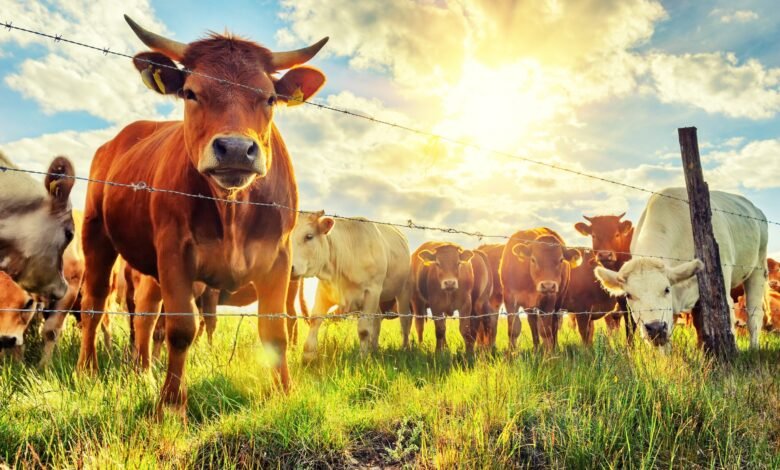
Protecting your herd becomes more than just a chore in the rustic fabric of pastoral life; it’s an art, a dance between the natural rhythms and watchful monitoring. Imagine your livestock animals grazing on the rolling emerald hills, their soft lowings blending seamlessly with the whispering breeze.
Start with the fundamentals: sturdy fencing that protects against the incursion of threats that could harm livestock animals. But look beyond the commonplace and explore the age-old knowledge of shepherds conversing in the language of their charges. Livestock animal owners play a vital role in safeguarding herds by all means possible. In this blog guide,e you will learn impeccable tips to protect livestock animal owners and safeguard herds in the most hassle-free way.
Insights on the Tips to Protect Livestock Animal Owners!
Expand your horizons by adding technologies to help you defend more areas while you are already covering livestock animal owners. Your watchfulness is extended day and night by the unwavering gaze of surveillance cameras, which act as the sentinels of today. Accept change without sacrificing tradition. GPS collars on valuable animals offer real-time assurance by fusing state-of-the-art technology with the age-old craft of farming.
More than just a chore, protecting your herd is a commitment to the intricate dance of life on your pastoral stage. Check www.raoaunited.com if you are thriving in the protection of herds, as they are working around the clock for it. Remember that every action you perform is a brushstroke in the masterpiece that is the coexistence of man and beast as you stand at the helm, the guardian of this living tapestry.
Invest in Secure Fencing:
A robust and secure fence is one of the main protection lines against outside dangers. Threats for livestock animals like wolves, foxes, and even domestic dogs have been known to attack livestock animals, including cows, goats, and sheep. Installing a well-thought-out and well-maintained fence is essential to keep these possible threats at bay.
For further security, think about installing electric fencing or high-tensile wire. Maintaining the enclosure’s integrity requires routine inspections and repairs of any damaged areas. Furthermore, consider the fence’s height because certain predators might try to scale or jump over it.
Give Sufficient Shelter:
Animals kept as livestock require appropriate shelter from harsh weather, whether sweltering heat or bitter cold. Purchasing durable barns or shelters can provide your animals a secure haven during inclement weather. To protect livestock animal owners, ensure adequate structural ventilation and sufficient room for the animals to walk around comfortably.
Ensure your cattle have enough bedding in winter to be warm and avoid frostbite. Consider adding shades or misting systems to help animals cool down and prevent heat stress in hotter climes.
Create a Herd Health Management Plan:
Keeping your animals healthy and happy requires routine veterinary treatment. Together with your veterinarian, create an extensive plan for managing the health of your herd. For more details regarding vet and livestock follow-up treatments, visit RAOA United. This regimen should include routine health checkups, parasite management, and immunizations.
Early disease detection reduces the impact on individual animals and stops the disease from spreading throughout the herd. Maintain thorough records of all immunizations and treatments to stay organized and monitor each animal’s medical history.
Use Rotational Grazing:
This efficient management technique improves both the soil and the livestock’s health by utilizing pasture resources. Avoid overgrazing and promote vegetation regeneration by splitting your pasture into smaller areas and alternating the animals across them.
It lowers the risk of parasites and disease transfer, guaranteeing your cattle have a consistent and sustainable food source. Rotational grazing improves your herd’s general health by imitating untamed herbivores’ actions.
Use Identification and Tracking Systems:
If your livestock is subject to theft, natural disasters, or disease outbreaks, putting identification and tracking systems in place can be helpful. You can maintain a thorough record of every animal using microchipping, ear tags, or even RFID (Radio Frequency Identification) tags.
A trustworthy identification system makes emergency evacuation or recovery operations more swift and effective. Additionally, it helps identify the cause of illness outbreaks and put focused control measures in place to slow their spread.
Safe Water Sources:
The well-being and output of animals depend on having access to enough clean water. Ensure water sources are clean and operating correctly by doing routine maintenance and inspections. Consider installing generators or other alternative water sources for backup plans for equipment malfunctions or power outages.
Keeping animals hydrated is the key point. Hydration plays a vital role in keeping animals’ digestion and general well-being on track. Stay watchful on your animals’ water intake during severe weather to spot any symptoms of dehydration or suffering.
Learn for Yourself and Look for Community Assistance:
Responsible ownership necessitates keeping up with the most recent advancements in animal care techniques, livestock management, and local laws. Joining networks of local farmers or livestock owners is a great way to exchange experiences, learn from others, and ask for help when you need it.
Attend conferences, webinars, and workshops to remain current on developing technologies and best practices in cattle management. Creating a network within the community can be helpful when tackling difficulties outside of your area of competence or during times of crisis.
Final Words:
Finally, maintaining your herd requires a dedication to your cattle’s welfare. Implementing the seven crucial suggestions builds a robust habitat that reduces hazards and supports a flourishing animal community. Every element, from sturdy fence to watchful health care, is vital to guaranteeing the well-being and protection of your cattle. Recall that responsible ownership goes beyond the bare minimum; it entails remaining knowledgeable, engaging in the farming community, and consistently adjusting to new obstacles.
Adopting these techniques helps ensure your operation’s sustainability while protecting your herd from outside hazards. Your commitment to these values as a responsible animal owner will safeguard your herd and foster a positive and fruitful relationship between you, your animals, and the land they live on.

